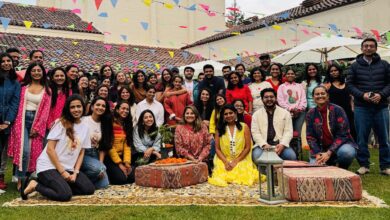CVS Versus Resumes Differences │ DiversityComm

By Natalie Rodgers
Most people already have a resume, a short one-to-two-page document that lists pertinent professional experience and skills. Still, sometimes, an interviewing company may ask for your CV. But what is a CV, and how is it different than a resume? And what do you need to craft both? Here’s what you need to know:
The difference
Simply put, a CV is a longer, more detailed version of a resume. While resumes are meant to be concise, CVs are larger documents that detail all of your professional experience. They are usually used for academic purposes but can also serve as a master list that you can use to help you create your resume. This is especially helpful if you tailor your resume to stand out for specific job openings. For example, suppose you are applying for a managerial position at a construction company. In that case, you’ll likely not include the details of a food industry job you had over 20 years ago. Your resume would only highlight the experiences you’ve had that make you the most qualified to be the manager of a construction company. However, your CV would include your food industry experiences as it’s still a part of your professional experience.
When applying for work, CVs are usually used for jobs that require extensive knowledge in a specific field. This often includes jobs in academic, legal, medical and science fields. If you’re applying for work outside of the United States, it’s important to know that the two documents are synonymous. In Europe, Australia, New Zealand and South Africa, a CV is the same as an American resume, while in South Asia, they have the same meaning as in the United States.
What to include
Again, it’s important to remember that resumes are shorter than CVs. While you will want to tailor your resume to what’s most applicable to the job application, all resumes should include:
- Your contact information
- Your resume objective
- Pertinent work experience
- Relevant licenses, certifications and skills
- Educational background
Conversely, a CV will include all of the information your resume has in addition to the rest of your professional experiences. In addition to all of your previous jobs, your CV should also include:
- A complete educational background
- All licenses and certifications
- All published works (books, chapters, peer-reviewed publications, etc.)
- Research, lab and fieldwork experience
- Grants, scholarships and fellowships received
- Awards received
- Volunteer and internship experience
- Non-academic activities
- Languages spoken
- Memberships
- Conferences
- References
Additional items found on your CV may be able to be included on your resume, but most will only be shared when requested by an employer or if they will better showcase your application.
Formatting
For a resume, your work experience should be listed chronologically, beginning with your current or most recent job. A CV tends to be in chronological order but can start with your oldest position and end with your current experiences.
Many people choose to showcase their job and work experiences as the first section of their document, but the order in which they are listed is up to you. It is recommended that resumes present the most interesting information at the top of their document to catch the attention of their hiring managers.
CVs and resumes should be submitted via PDF or a Word document if you are emailing it.
Which document is needed?
Usually, the job description will let you know if they want to see your CV or resume. If the job you are applying for isn’t in a field that generally requires a CV, it’s usually safe to assume that a resume will suffice. If anything makes you question which document is needed, you can always reach out to your point of contact and inquire which they prefer. Visit DiversityComm’s job board for leads on employment opportunities.
Read more news for the AAPI Community here.





